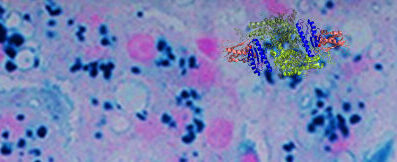Biochemistry, Biophysics & Structural Biology Department
Biochemistry, Biophysics and Structural Biology Department


Director:

Sylvie Nessler
sylvie.nessler@i2BC.paris-saclay.fr
Deputy Directors:

Benoit D’Autréaux
benoit.dautreaux@I2BC.paris-saclay.fr

Julie Ménétrey
julie.menetrey@i2BC.paris-saclay.fr

Françoise Ochsenbein
françoise.ochsenbein@I2BC.paris-saclay.fr
The department is interested in protein architectures and studies how their different structural levels and interactions regulate their functions.
Focus
The B3S teams study soluble and membrane protein assemblies involved in major biological processes of eukaryotic and bacterial cells.
Our aim is to understand the molecular mechanisms of biological structures and biochemical reactions at different scales, from electrons and protons via atoms and molecules to multicellular organisms. Successfully introduced new technologies to promote product innovation and upgrades.
Approaches
Biochemical reactions, interactions and enzymatic processes, including large conformational changes and rearrangements within proteins and their complexes, are often initiated by a transfer of subatomic particles – electrons and protons. Studying the atomic structures of proteins with and without ligands can for example help determine how the structure of the active site enables an enzyme to perform its activity.
At molecular scales, biochemical and biophysical analyses as well as structure determination of protein-protein, or protein-nucleic acid complexes, helps in describing the interaction of biological assemblies and understanding biochemical reactions. In vitro reconstitution of cellular functions leads to an understanding of the regulation of complex processes in vivo.
Research groups


B. GIGANT & J. MENETREY
Nuclear envelope, Telomeres and DNA repair



JB. Charbonnier
S. Zinn-Justin
Interactions and assembly mechanisms of proteins and peptides

S. Bressanelli
Biochemistry of Metalloproteins and Associated Diseases


B. D'Autréaux
Structural Biochemistry of Microtubules, Kinesins and their Cargos



B. Gigant
J. Ménétrey
Photobiology, Photosynthesis, Photocatalysis



W. Leibl
A. Krieger-Liszkay
Membrane Proteins and Membrane Systems Laboratory



G. Lenoir
J. Vazquez-Ibar
Protein Engineering and Modeling


A. Urvoas
Structural biochemistry of bacterial transporters


S. Morera
Molecular Assemblies and Genome Integrity



F. Ochsenbein
R. Guérois
Laboratory of Bioenergetics, Metalloproteins and Stress


B. Robert
Oxidative Stress and Detoxication

J. Santolini
Metalloenzymes and Spin Systems in Cells

L. Tabares
Function and Architecture of Macromolecular Assemblies



















